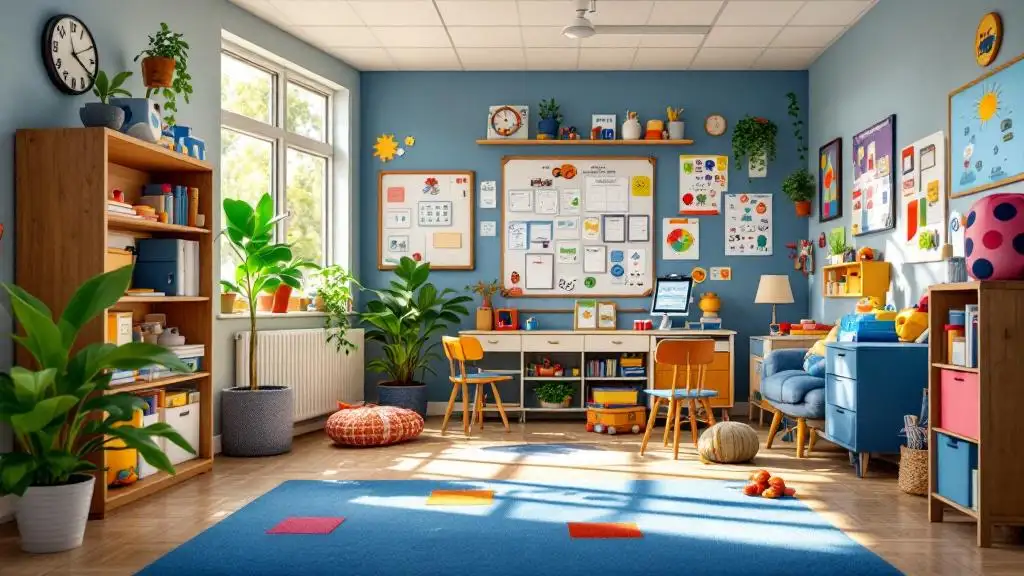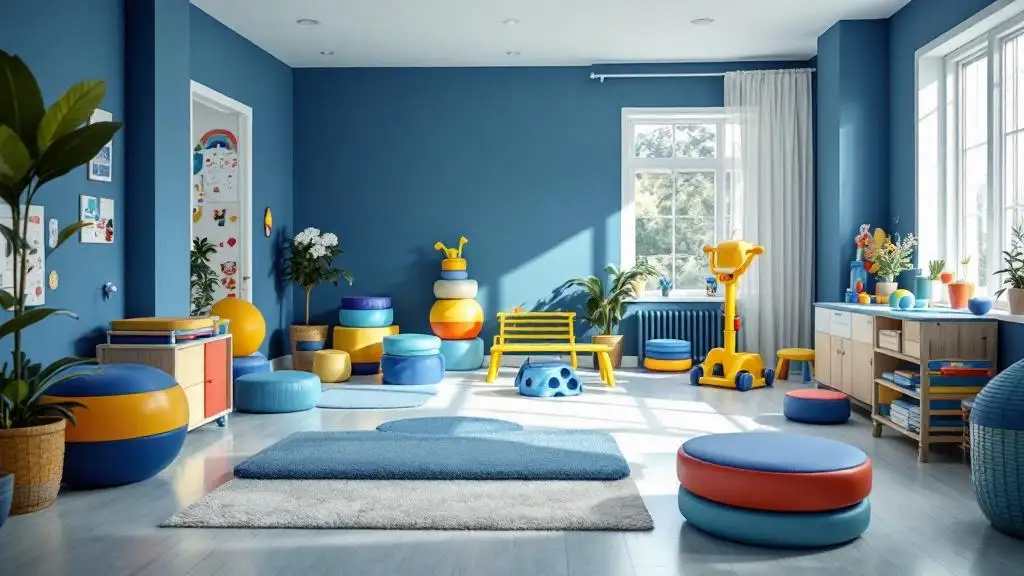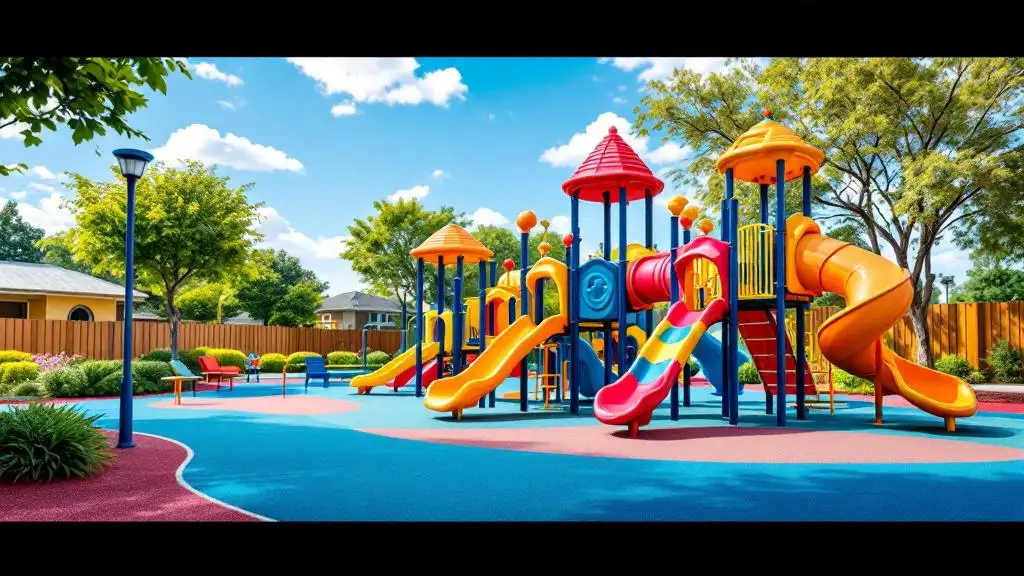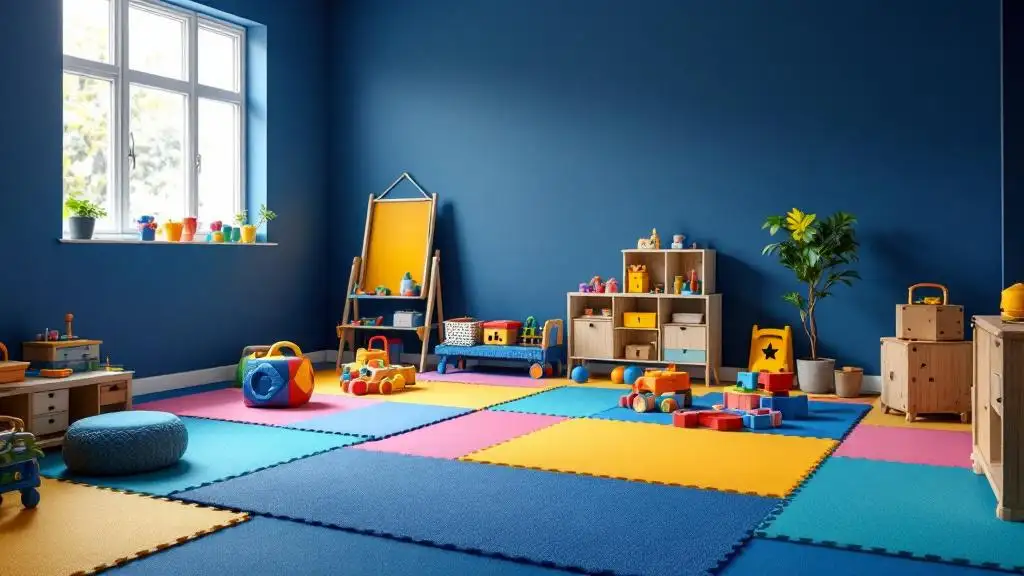
Understanding Vestibular Disorders in Children
Vestibular dysfunction in children manifests through various symptoms such as gaze instability, disequilibrium, and delays in motor development. These conditions can stem from pathologies involving peripheral or central vestibular structures, often leading to challenges in maintaining balance, coordination, and safe mobility. Early identification and intervention are crucial because the development of balance and eye movement control can be significantly hindered if vestibular deficits occur before critical developmental periods. Kids with bilateral vestibular hypofunction, for instance, often show persistent motor delays that require targeted therapy to improve their functional outcomes.
Comprehensive Pediatric Vestibular Assessment and Diagnosis
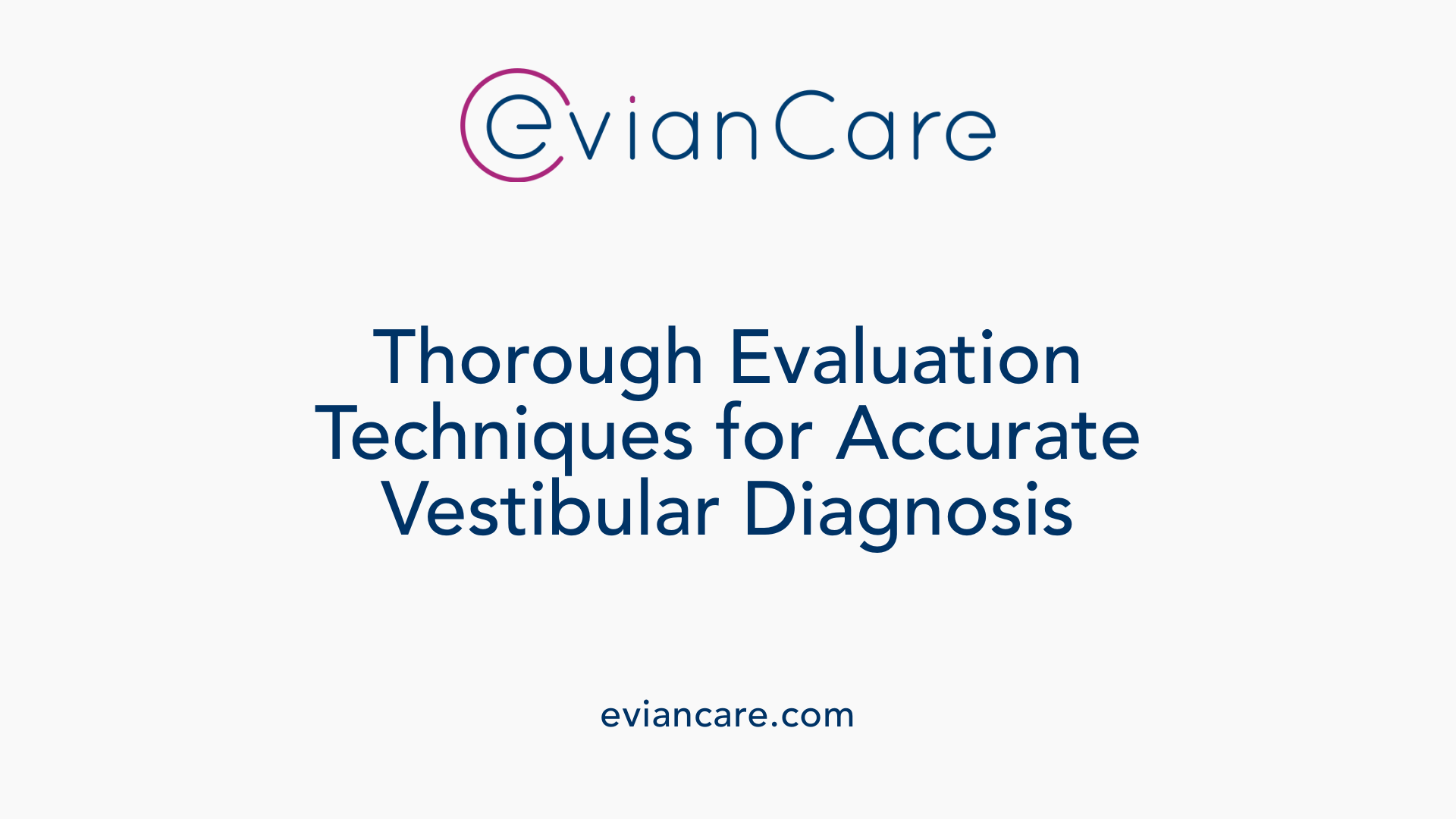
What are the typical assessment and diagnostic procedures used in pediatric vestibular therapy?
Diagnosing vestibular issues in children requires a thorough evaluation using a variety of specialized tests and observations. One common method is balance testing, where clinicians assess a child's ability to maintain stability in different positions and during movement. The Pediatric Balance Scale is frequently utilized to measure balance capabilities and guide intervention plans.
Alongside balance tests, vestibular function evaluation involves procedures like caloric testing and rotational chair assessments. These tests help determine if there is unilateral or bilateral vestibular hypofunction by stimulating the inner ear and measuring eye movements or neural responses.
Motor coordination assessment is also critical. Tools such as the Movement Assessment Battery for Children evaluate motor skills, balance, and coordination, which can be affected by vestibular dysfunction.
Objectively, advanced tools like computerized dynamic posturography provide detailed data on how children organize sensory inputs to maintain balance. This equipment quantitatively measures postural sway and stability under various conditions.
Importantly, clinical observations and caregiver reports play a significant role. Observations of behaviors such as avoiding motion, tilting of the head, or frequent falls can highlight underlying vestibular issues. Caregivers' insights into daily functional limitations help tailor the assessment for each child's unique needs.
Gathering comprehensive information through these combined methods allows clinicians to accurately diagnose vestibular impairments and develop personalized therapy plans for children. Early and accurate diagnosis is vital to prevent long-term developmental delays and improve motor and balance outcomes.
| Assessment Method | Purpose | Tools/Examples | Additional Notes |
|---|---|---|---|
| Balance testing | Evaluate static and dynamic stability | Pediatric Balance Scale | Guides therapeutic direction |
| Vestibular function tests | Detect inner ear deficits | Caloric testing, rotational chair | Quantitative and objective |
| Motor coordination evaluations | Assess overall motor skills and integration | Movement Assessment Battery | Identifies developmental delays and motor issues |
| Objective balance measures | Quantify postural control and sensory integration | Dynamic posturography | Provides detailed data for analysis |
| Clinical observations | Recognize behavioral signs and functional limitations | Observational checklists | Essential for nuanced understanding |
| Caregiver questionnaires | Collect real-world functional impact | Standardized surveys | Complements clinical data |
Early comprehensive assessment ensures that children with vestibular dysfunction receive the targeted treatment needed for improved balance, coordination, and overall development.
Tailored Vestibular Therapy: Approaches and Techniques for Children

Do physical therapy include vestibular therapy, and what does it involve?
Yes, vestibular therapy is an integral part of physical therapy dedicated to addressing balance and dizziness issues in children. This specialized therapy, often called vestibular rehabilitation therapy (VRT), involves expert-designed exercises aimed at improving gaze stability, balance, and postural control.
Therapists tailor interventions to the child's specific needs, focusing on enhancing the child's ability to process movement and sensory input effectively. Techniques include exercises that promote adaptation, habituation, and substitution of neural pathways to compensate for vestibular deficits.
The therapy often combines activities like balance training, gaze stabilization exercises, and habituation to visual motion sensitivity. For example, repositioning maneuvers are used in cases such as benign paroxysmal positional vertigo (BPPV). These maneuvers help reposition displaced inner ear debris, alleviating vertigo.
Activities are carefully selected based on the child's age and developmental stage to ensure engagement and safety. Children might participate in games, use toys, or perform movement activities like swinging or spinning, all modified to meet their individual needs.
Overall, vestibular therapy supports children in developing better sensory integration, motor control, and confidence in movement, helping them reduce dizziness symptoms and improve their daily function.
Approaches and Techniques Covered
| Technique | Description | Purpose | Example Activities |
|---|---|---|---|
| Adaptation | Exercises that induce long-term changes in vestibular responses through repeated head movements while maintaining gaze stability. | To improve the body's natural response to movement and reduce dizziness. | X1 and X2 gaze stabilization exercises, head and eye movements. |
| Habituation | Repetitive exposure to motion or visual stimuli that provoke dizziness, aimed at decreasing sensitivity over time. | To lessen motion-induced dizziness and improve tolerance. | Repeated rotations or visual motion activities. |
| Substitution | Teaching the use of alternative sensory strategies, such as visual or somatosensory cues, to compensate for vestibular deficits. | To enhance balance in children with severe or bilateral loss. | Using visual focus or tactile feedback during movement. |
Specific Exercises for Children
Children benefit from engaging, age-appropriate activities that can be performed at home or in therapy sessions. These include:
- Bouncing on a trampoline or therapy ball
- Spinning in circles
- Balancing on a narrow surface
- Head tilts and eye tracking
- Obstacle courses for coordination
Consistency over 6-8 weeks with supervision ensures improvements in balance, gaze stability, and motor development. Starting slowly and respecting each child's comfort levels is essential.
Why Early and Customized Intervention Matters
Early identification and intervention are crucial, especially for children with conditions like vestibular hypofunction or sensory processing disorders. Tailored exercises can help these children develop better balance, reduce dizziness, and support overall motor skills, fostering safer and more confident movement.
Enhancing Balance and Motor Skills through Pediatric Vestibular Therapy

What are vestibular therapies for children, and how do they improve balance, coordination, and motor skills?
Pediatric vestibular therapy is a specialized form of treatment designed to help children with balance, coordination, and sensory processing difficulties. Conducted by trained occupational and physical therapists, this therapy uses fun, engaging activities tailored to the child's developmental level.
Activities such as bouncing on trampolines, navigating obstacle courses, swinging, and spinning are core components of vestibular therapy. These exercises stimulate the vestibular system, which is responsible for balance and spatial orientation. By regularly practicing these movements, children can develop better motor control, improve their ability to maintain stability during motion, and enhance their overall coordination.
The therapy involves modifications to ensure safety and engagement. For instance, activities are performed on soft surfaces or with supervision to reduce fall risk. Toys, games, and playful environments make the exercises enjoyable, encouraging children to participate actively.
Visual-motor exercises and the use of sensory tools further support sensory integration and body awareness. Children might be guided through visual tracking, head movements, or balance challenges that are both safe and stimulating.
The expected benefits of pediatric vestibular therapy include improved stability when moving, better coordination of limbs, enhanced motor planning skills, and increased confidence in physical activities. These improvements help address issues like delayed motor development, poor posture, and mobility challenges.
In summary, through playful yet targeted exercises, vestibular therapy helps children build essential motor and sensory skills, setting a foundation for healthier development and greater activity participation.
Conditions and Symptoms Addressed with Vestibular Therapy in Children
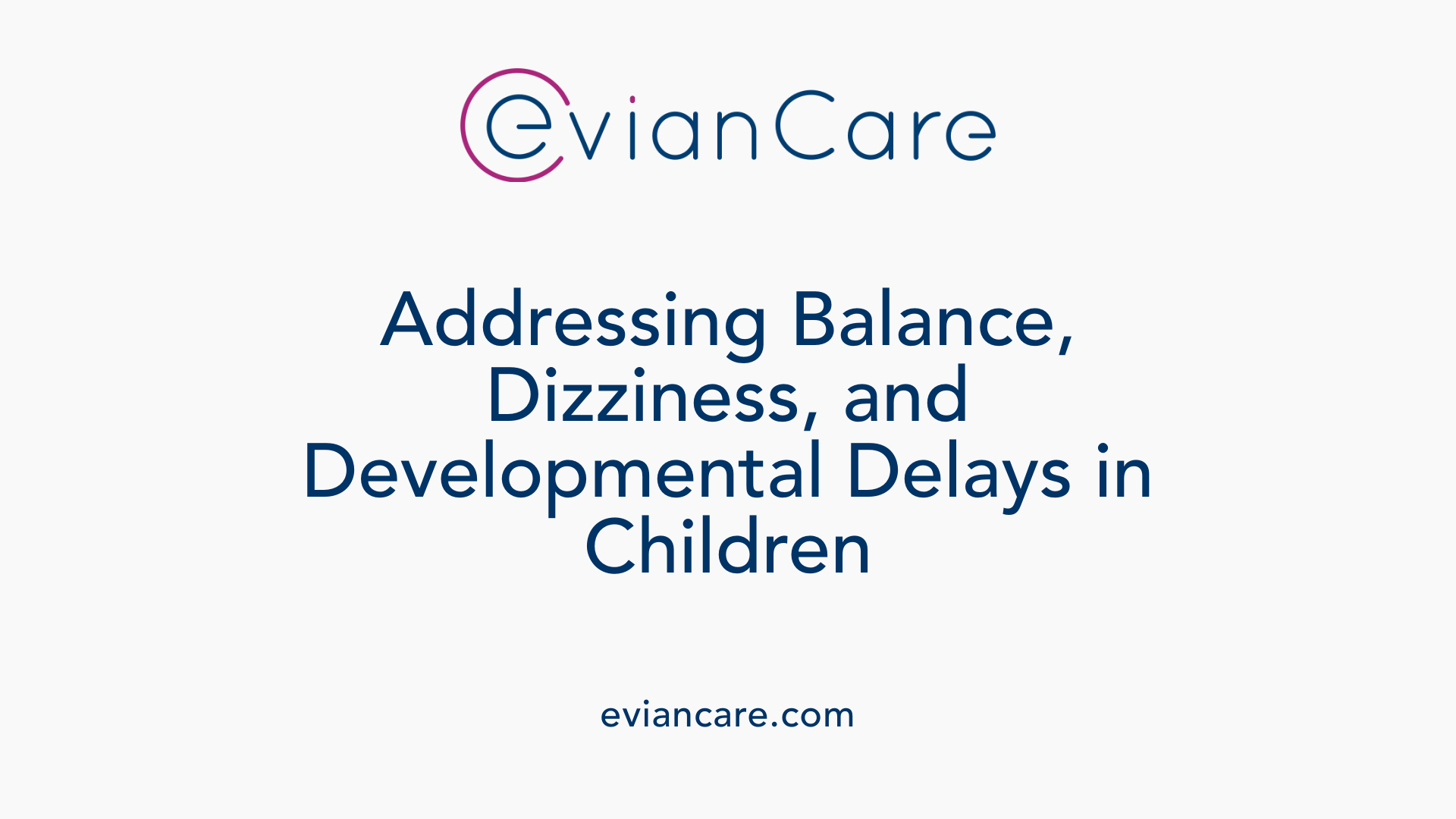
What conditions and symptoms are treated with pediatric vestibular therapy?
Pediatric vestibular therapy is designed to help children overcome issues related to their balance and spatial awareness. It addresses a range of symptoms such as dizziness, vertigo, and difficulty maintaining stable posture. Children experiencing unsteady movement, frequent falls, or poor coordination often benefit from these therapies.
This therapy is also effective for inner ear conditions like benign paroxysmal positional vertigo (BPPV) and Meniere’s disease, which cause episodic dizziness and imbalance. Children with head injuries or post-concussion dizziness can recover better through targeted exercises.
Sensory processing disorders involving vestibular input also respond well. These children might be overly sensitive or under-responsive to movement, and therapy can help normalize their sensory responses.
Developmental delays, including late motor milestones such as crawling or walking, and coordination challenges, are common indications for vestibular rehabilitation. The ultimate goal is to restore and enhance balance, reduce dizziness, and improve overall motor function.
| Condition/Symptom | Description | Typical Treatment Focus |
|---|---|---|
| Dizziness/Vertigo | Sensation of spinning or imbalance | Gaze stabilization, habituation exercises |
| Inner Ear Disorders | BPPV, Meniere’s, labyrinthitis | Repositioning maneuvers, balance training |
| Head Injuries/Post-Concussion | Dizziness, imbalance after trauma | Gait and balance exercises |
| Sensory Processing | Over or under responsiveness to movement | Sensory integration activities |
| Developmental Delays | Motor milestone delays and coordination issues | Motor planning, balance exercises |
Early intervention can substantially improve outcomes. Tailored exercises, combined with professional supervision, support children in developing safe movement and balance skills, fostering healthier growth and integration of sensory input.
Integrating Specialized Interventions for Optimal Outcomes

What are the goals and expected outcomes of vestibular rehabilitation in pediatric patients?
Vestibular rehabilitation in children is tailored to help improve balance, coordination, and overall motor skills. The primary aim is to promote better mobility and independence in daily activities, reducing symptoms like dizziness and vertigo that can interfere with normal development.
This therapy also encourages the development of compensatory strategies and neural adaptation, enabling children to better manage their vestibular deficits over time. As a result, children experience enhanced postural control and a decreased risk of falls, which are crucial for safe movement.
Expected outcomes include improved stability during various activities, better integration of vestibular input with visual and proprioceptive signals, and increased confidence in movement. Overall, vestibular rehabilitation supports children in achieving functional milestones, improving their quality of life and participation in everyday activities.
How are personalized therapy plans structured?
Therapists develop individualized treatment approaches based on the child's specific impairments, age, developmental level, and interests. Activities are chosen to target deficits such as gaze instability, poor balance, or motor delays. This ensures the therapy is engaging and effective.
Typically, plans include exercises like balance training, visual-motor tasks, and movement coordination activities. The interventions are modified over time to match progress and changing needs.
What role do visual, vestibular, and proprioceptive exercises play?
These exercises are fundamental to vestibular rehabilitation. Visual activities improve gaze stability and reduce dizziness, while vestibular exercises stimulate the inner ear system to enhance balance and spatial awareness.
Proprioceptive activities focus on body awareness and control through movements that challenge joint and muscle feedback. Combining these modalities helps the brain adapt to vestibular deficits and develop efficient compensatory responses.
Why is multidisciplinary team involvement important?
Optimal outcomes are achieved through collaboration among ENT specialists, neurologists, pediatric physical and occupational therapists, and audiologists. This team applies a comprehensive assessment to identify underlying causes and tailor interventions.
By integrating medical management with targeted therapy, the team addresses all aspects of vestibular dysfunction, from medical treatments like repositioning maneuvers to sensory integration exercises.
How is progress monitored, and how are activities modified?
Children's responses to therapy are regularly evaluated through functional assessments and observation. Progress is documented, and exercise difficulty is adjusted to ensure continued challenge and engagement.
Activities are modified to be age-appropriate, safe, and motivating, often incorporating toys, games, or real-life movement scenarios. Consistent monitoring helps refine the plan, fostering steady improvement.
Why is early intervention and developmentally appropriate exercises crucial?
Early identification allows for timely therapy, which can prevent or reduce lifelong developmental delays related to balance and coordination. Exercises are selected to match the child's cognitive and motor skills, ensuring they are challenging yet achievable.
Developmentally appropriate activities foster better adherence, promote natural skill acquisition, and support overall growth in sensory integration and motor functions.
The Path Forward in Pediatric Vestibular Care
Effective management of vestibular disorders in children through personalized physical therapy interventions significantly enhances their balance, coordination, and overall motor development. Early diagnosis, tailored treatment plans, and multidisciplinary collaboration are essential for optimizing outcomes. Ongoing research and technological advances promise to further refine these therapies, making them more accessible, engaging, and effective for children at different developmental stages. Ensuring that children receive timely, age-appropriate vestibular rehabilitation can profoundly impact their growth, safety, and quality of life, paving the way for better long-term health and functional independence.
References
- Vestibular Rehabilitation for Children - PMC - PubMed Central
- Vestibular Rehabilitation | Occupational Therapy and Physical ...
- Pediatric vestibular therapy - Children's Health
- The Top 10 Vestibular Exercises For Your Child: Expert Guide
- Identifying, Treating Pediatric Vestibular Dysfunction Involves ...
- Vestibular Rehabilitation - Physical Therapy - Johns Hopkins Medicine
- Part III: Effective Intervention or Treatment for Vestibular Related ...
- The Vestibular System in Pediatrics - Carolina Therapy Connection

